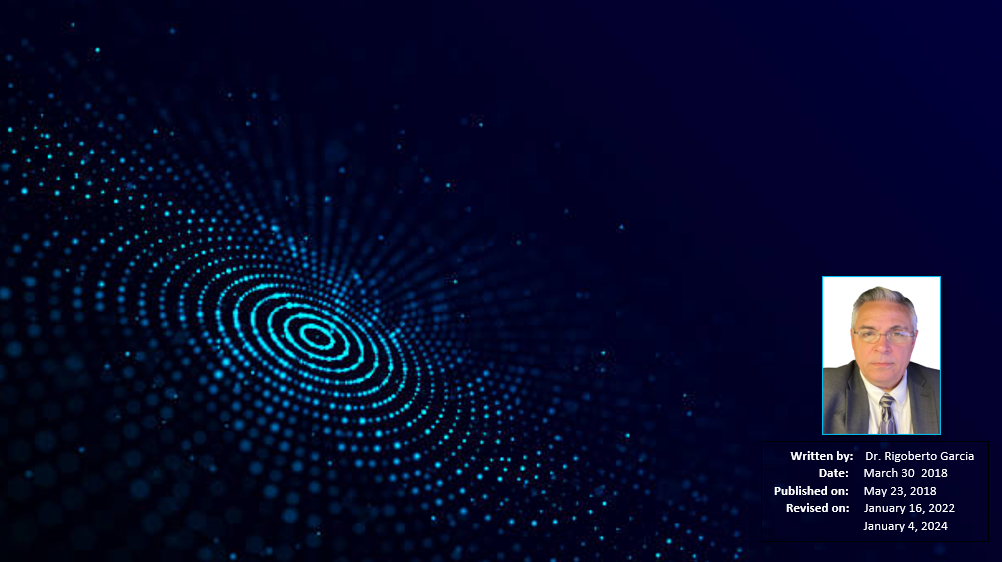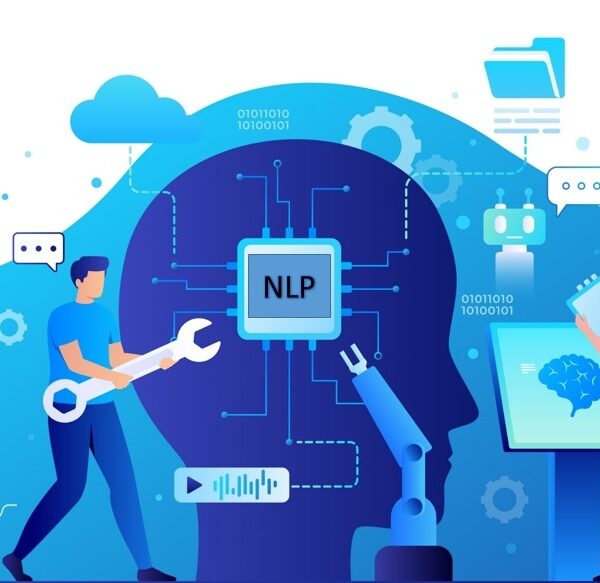Article
Quantum-Resonance Cybernetics (QRC)
Dr. Rigoberto Garcia
-
- Affiliation 1; rgarcia@softwaresolutincopr.com
- Affiliation 2; rgarcia@ssai.institute
* Correspondence: rgarcia@softwaresolutioncorp.com; Tel.: 1 (202) 379-1862 x1121
Abstract: The digital cyberspace realm, much like the physical ocean, is a vast expanse where data flows like water through channels and networks. Dr. Garcia hypothesis posits that cyberspace comprises digital continents and islands, with data packets creating ripples as they traverse this digital ocean. By applying the principles of hydrodynamics and wave pattern analysis to the digital domain, and integrating quantum entanglement and resonance theory, a novel cybersecurity approach emerged. Traditional AI and deep learning methods are increasingly challenged. A leap into a completely new realm of technology is essential to stay ahead of these threats. Quantum-Resonance Cybernetics (QRC) proposes groundbreaking approach that leverages the principles of quantum computing and resonance theory. Unlike traditional AI, which relies on classical computing paradigms and data-driven learning, QRC operates on quantum principles, providing exponentially faster computation and fundamentally different data processing capabilities. The foundation lies in in my 2018 published research on Quantum-Resonance hypothesis. The hypothesis states that cyberspace behaves analogously to a vast ocean where digital packets, when transmitted, create ripple wave patterns. These ripples, when interacting with various digital entities like websites or networks (akin to islands and continents), exhibit unique patterns that can reveal the presence of cyber threats. Quantum entanglement allows for the instant detection of these ripples across vast distances, while resonance theory helps in understanding and predicting cyber threats based on the frequency patterns of these digital waves.
Keywords: quantum-resonance; digital-ripples; Cyberspace-Digital Ocean, frequency-patterns, quantum-entanglement, threat detection, digital hydro-dynamics, Resonance-theory predictive modeling, cyberattack resonance.
1. Introduction
Quantum-Resonance Cybernetics (QRC) is a groundbreaking approach that leverages the principles of quantum computing, hydro-dynamics theory, ocean currents theory and resonance theory. Unlike traditional AI, which relies on classical computing paradigms and data-driven learning, QRC operates on quantum principles, providing exponentially faster computation and fundamentally different data processing capabilities. It creates a mapping of cyberspace currents, the integration of data streams into cyberspace, and able to track minute disturbances within the cyberspace ecosystem.
2. There are five primary concepts at work
-
- Quantum Entanglement in Threat Detection: Leveraging quantum entanglement to analyze data movement across the network, enabling the detection of anomalies and cyber threats irrespective of physical distance.
- Resonance Theory for Predictive Modeling: Applying resonance theory from physics to understand and predict cyber threats. By analyzing the frequency patterns of digital wave movements, deviations from normal network behavior indicative of cyber threats can be detected.
- Ocean Currents theory to threat in Cyberspace ecosystem flow patterns: Ocean currents are key in shaping marine environments, influencing climate, and determining the distribution of marine life. In a similar vein, data currents (data flows within networks) shape the digital landscape. Like physical ocean currents, these data currents have predictable patterns but can also be affected by various factors leading to changes in flow and disruptions.
- Hydro-dynamics theory for threat detection mapping: Just as hydrodynamics studies the behavior and interaction of fluids with their environment, we can analogously study the flow of data in cyberspace. In this digital ocean, data packets move like water molecules, and cyber threats can be compared to pollutants or invasive species in water bodies.
- Quantum Encryption for Unbreakable Security: Implementing quantum cryptography to protect data. Quantum key distribution (QKD) methods ensure that data within the system is safeguarded against unauthorized access, maintaining the integrity of data in transit.
3. Implementation Strategy
-
- Quantum Computing Infrastructure: Development of quantum computers capable of handling the complex calculations required for quantum entanglement and resonance analysis.
- Algorithm Development: Creation of new algorithms based on quantum mechanics and resonance theory to analyze and predict cyber threats.
- Testing and Deployment: Extensive testing in controlled environments to ensure reliability and effectiveness, followed by gradual implementation in high-risk sectors.
4. Methodology
-
- Quantum Anchor Identification: Mature QNM (Quantum Network Mapping) Algorithm method is used to identify the quantum anchor points within the network, which are pivotal in detecting the source of the ripple waves.
- Wave Pattern Analysis: Employ hydrodynamic principles to analyze the wave patterns created by data packets. This involves tracking the temporal shifts and resonance changes in the digital waves.
- Resonance Frequency Mapping: Map the normal resonance frequencies of various digital entities and networks to establish a baseline for threat detection.
- Quantum Shield Development: Create quantum shields for data packets, protecting them from unauthorized access and ensuring that the integrity of the data is maintained.
5. Testing and Validation
-
- Simulated Digital Ocean: Create a controlled, simulated digital environment to mimic the behavior of cyberspace.
- Ripple Wave Generation and Analysis: Generate and analyze digital ripple waves, observing their interactions with various digital entities.
- Quantum Entanglement Testing: Test the effectiveness of quantum entanglement in real-time detection of anomalies across the network.
- Resonance Deviation Detection: Validate the hypothesis by detecting deviations from the baseline resonance frequencies, correlating them with known cyber threat patterns.
6. Conclusion
This whitepaper presents a groundbreaking approach to cybersecurity, blending the fields of quantum physics, hydrodynamics, and information technology. By viewing cyberspace through the lens of a digital ocean, the proposed methodology offers a novel perspective in detecting and countering cyber threats. The integration of quantum entanglement, resonance theory, and quantum encryption in this framework opens new frontiers in the realm of digital security.
This abstract introduces a unique hypothesis and a methodology for exploring and validating it. The concept of applying hydrodynamic principles and wave pattern analysis to cyberspace, combined with quantum mechanics, represents an innovative leap in the field of cybersecurity.
Quantum-Resonance Cybernetics represents a radical departure from traditional cybersecurity methods. By harnessing the power of quantum computing and the novel application of resonance theory, QRC offers a futuristic and potentially unassailable approach to cybersecurity, opening new frontiers in the protection of digital assets
Netsofthost Case Scenario
Scenario: , Netsofthost, Corporation, a multinational corporation, operates a complex global network infrastructure spread across various continents, much like a digital ocean with continents and islands. This infrastructure is crucial for their daily operations, including sensitive data transactions of thousands of customers.
Application of QRC in Netsofthost
-
- Quantum Anchor Identification: Netsofthost employs Quantum Network Mapping (QNM) to identify quantum anchor points within their network, this allowed them to create an early warning system, crucial for detecting the source of potential cyber threats.
- Wave Pattern Analysis: The datacenters in Sri Lanka, Europe, Brazil and North America utilized hydrodynamic principles to analyze the wave patterns, between different datacenters created by data packets in both the internal and global network, tracking temporal shifts and resonance changes, within the cyberspace digital ocean data flow currents. This approached allowed Netsofthost to identifying unusual data flow patterns that could indicate a security breach.
- Resonance Frequency Mapping: Establishing a baseline of normal resonance frequencies for different parts of their digital network, Netsofthost was able to quickly identify deviations indicative of cyber threats, it was able to map vast regions of cyberspace to target wave source and map location and threat.
- Quantum Entanglement and Ripple Wave Analysis: It created models to leveraging quantum entanglement, identifying minute ripple changes. Netsofthost can detect anomalies not only in their network in real-time, irrespective of the physical distance, but predict the location of the next ripple wave threat. This included analyzing digital ripple waves for interactions with digital entities that could signify a cyberattack.
- Predictive Modeling Used the Resonance Theory: The resonance theory provided deep analysis or the wave, applying both the base and crest of the wave, predicting cyber threats by analyzing the frequency patterns of digital wave movements.
- Quantum Encryption for Security: When global pattern current wave deviating was detected, assets in transit and network edges deployed advanced shielding. The quantum shielding algorithm dissipated the attack waves and prevented data bridge. Netsofthost implemented quantum cryptography, ensuring the integrity of data in transit and safeguarding against unauthorized access.
- Testing and Validation cycle: Various iterations of the QRC system underwent rigorous evaluation. Although, all components perform well within the 2021-2022 testing phase, lack of funding drove the project to a halt. Extensive testing in a simulated digital environment, mimicking the behavior of cyberspace, to ensured its effectiveness in real-world applications.
This case demonstrates how the principles of QRC – combining quantum computing, hydrodynamics, ocean currents theory, and resonance theory – can be applied for effective and groundbreaking threat detection and cybersecurity management, as outlined in the article.




